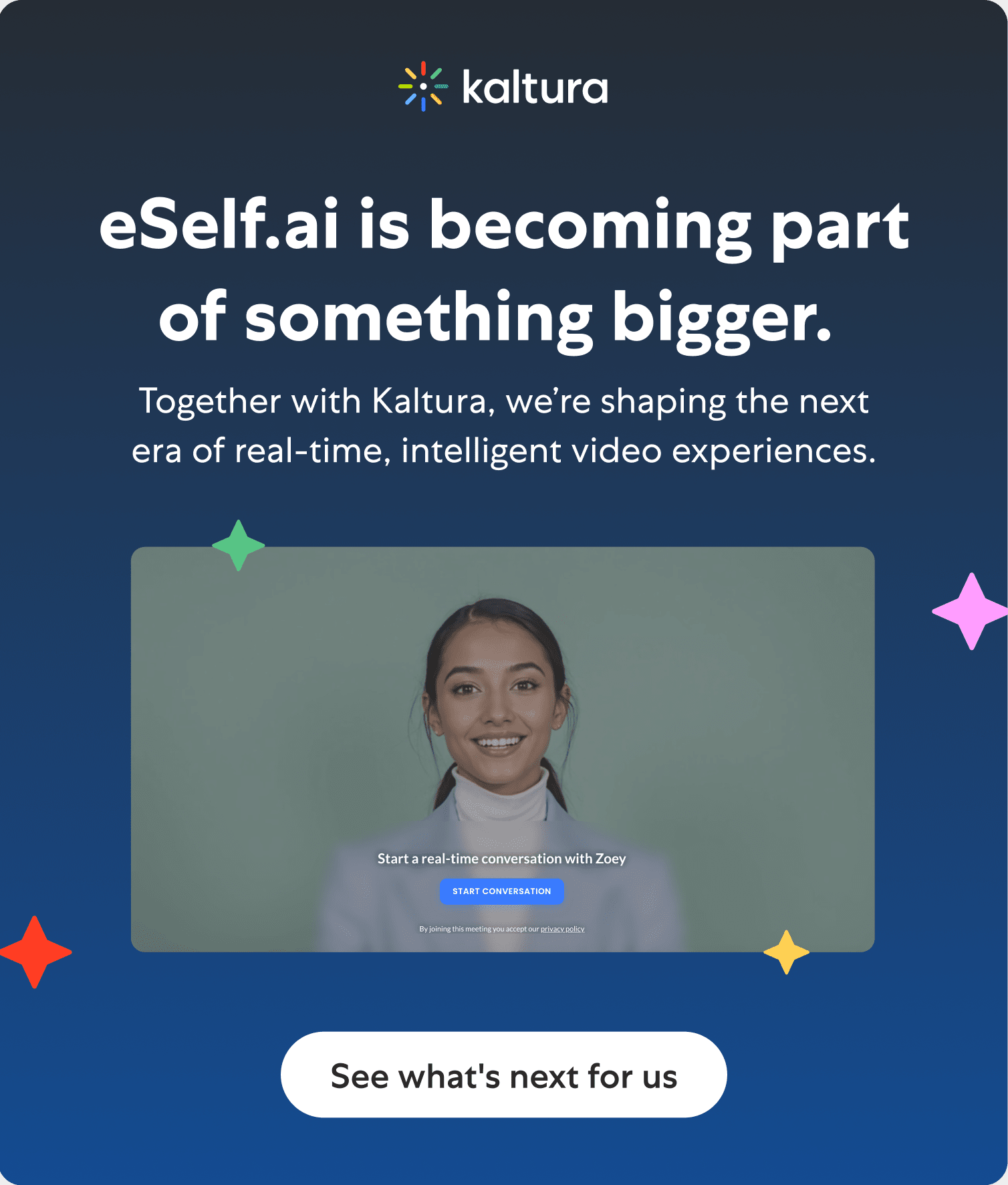Higher education institutions face ongoing challenges in retaining students and ensuring their success. High retention rates not only reflect your institution’s ability to provide an effective and supportive learning environment, but they also impact reputation and financial stability.
Traditional student retention support systems often only intervene after students have disengaged. With advancements in AI, institutions can proactively identify risks, personalize support, and scale student engagement.
So, how can AI support your students and contribute to their long-term success?
Why Retention is a Strategic Priority for Institutions
The financial cost of attrition
According to the National Student Clearinghouse Research Center, only 54% of the 2 million students who start college each year actually graduate with degrees. Additionally, nearly 25% of first-year students drop out during or after their first year of study. This leaves colleges with an estimated loss of $16.5 billion annually in tuition revenue due to attrition.
Colleges not only lose tuition revenue; they lose the time, faculty resources, and institutional support invested in students who complete their programs.
Beyond financial concerns, high dropout rates can negatively affect national rankings, threaten accreditation eligibility, and damage an institution’s reputation. Student retention, therefore, is not a nice-to-have but a critical risk that must be managed strategically.
Retention benchmarks by sector
Benchmarks help institutions contextualize and plan retention strategies; however, they differ significantly across institutional geographies and types. In the U.S, four-year private institutions have a higher average first-year retention rate (81%) compared to public four-year colleges (68%) and two-year community colleges (58%).
In European countries such as Finland and Germany, retention rates are higher due to free tuition and structured degree programs. Comparing these international models highlights the areas where AI-embedded systems can help U.S. institutions close structural gaps.
Student success as a strategic KPI
Today, the student retention rate is a core Key Performance Indicator (KPI) that reflects an institution’s ability to deliver value, uphold its mission, and maintain operational stability. High retention generally leads to a larger alumni network, increased public funding, and a stronger position in competitive rankings.
Tracking metrics such as progression rates, course completion rates, and post-graduation employment rates provides administrators with a comprehensive overview of institutional effectiveness. When these metrics are monitored in real-time through predictive analytics platforms, leadership can identify at-risk cohorts, implement targeted interventions, and measure their impact within the same reporting cycle.
Leveraging AI-driven tools that provide real-time alerts, engagement scoring, and automated follow-up workflows enables institutions to shift from reactive crisis management to proactive, data-informed retention strategies.
The Institutional Levers that Influence Retention
While AI can transform how your institution identifies and supports at-risk students, it cannot replace the foundational institutional levers, such as teaching quality, academic scaffolding, and financial flexibility. However, these levers can be significantly strengthened with data-driven tools that help improve retention and graduation rates.
Inclusive pedagogy and classroom environments
Student retention begins in the classroom. Inclusive pedagogy ensures teaching practices, assessments, and materials are all responsive to diverse learning needs and backgrounds. Faculty can further strengthen student belonging by incorporating peer collaboration, transparent grading criteria, and active learning.
When combined with AI-enabled analytics, instructors can receive early engagement reports that flag drops in participation or assignment completion before traditional feedback is provided. This enables interventions before student disengagement becomes withdrawal.
Academic scaffolding and equity interventions
Academic scaffolding refers to the structured support mechanisms to help students, particularly those from disadvantaged backgrounds, to meet the demands of higher education. These mechanisms include bridge programs, embedded tutoring, and supplemental tutoring.
With AI-driven monitoring, institutions can track performance trends in real-time and automatically recommend tutoring, skill-building modules, or study groups when the need is identified. This ensures each student receives personalized, timely support, reducing the risk of academic attrition.
Financial flexibility and emergency support
Finances remain one of the top predictors of student withdrawal. Institutions can reduce this risk by offering flexible tuition payment plans, completion scholarships, and micro-grants for emergencies. By integrating AI, financial systems can proactively identify students facing financial stress. For instance, eSelf.ai avatars can guide students through payment plan enrollment, provide multilingual explanations of financial aid, and answer common billing questions.
This automation reduces administrative friction while ensuring students know how and where help is available before they reach the dropout point.
Predictive AI and the Future of Retention Strategy

Predictive AI enables institutions to move from reactive retention interventions to proactive, real-time management of student success. By analyzing academic performance, engagement metrics, and behavioral data, AI systems can identify at-risk students early enough to implement effective interventions and prevent dropouts.
Early warning systems for at-risk students
Modern AI-powered warning systems continuously track key metrics, including LMS logins, attendance, test performance, assignment submissions, and even key phrases in written communications. Rather than flagging one-off incidents, these systems detect patterns of poor performance, low activity, and decreased engagement before they escalate into a crisis.
For instance, while missing one homework assignment might be normal and may not trigger concern, the combination of missing an assignment with a drop in attendance and in LMS activity could automatically trigger an advisor check-in.
Institutional dashboards powered by AI
AI-driven dashboards consolidate student data into real-time insights and visuals for administrators, faculty, and advising teams. When integrated with Learning Management Systems (LMS) and Student Information Systems (SIS), these dashboards could offer:
- Engagement trend analysis over weeks and terms
- Live student risk scores by cohort, course, or program
- Real-time outreach prompts based on preset parameters
These dashboards not only identify student needs but also track the effectiveness of interventions, enabling institutions to refine their strategies over time.
Use Case: eSelft.ai for intelligent retention alerts
eSelf.ai’s AI avatars are embedded into students’ daily digital environments, from first-year onboarding to academic progression. These avatars analyze academic patterns and engagement behaviors, alerting to early signs of risk and delivering a personalized and conversational nudge in the student’s preferred language and tone.
For example: “ You have missed your last two chemistry classes–would you like me to connect you with a peer tutor?”
If the AI avatar detects emotional distress or high academic risk, it can escalate the case to a human advisor for more nuanced and empathetic support.
What each role can do: staff checklists
When implementing predictive AI, it is important that everyone understands their responsibilities to ensure seamless integration. Here is how each group can contribute:
Administrators:
- Review weekly dashboard summaries
- Ensure policy changes to support intervention goals
- Allocate retention resources to high-need programs
Faculty:
- Monitor engagement drops in their courses
- Reach out personally to flag students within 48 hours
- Recommend academic support services when needed
Advisors & support staff:
- Run proactive outreach campaigns
- Offer “no wrong door” access, connecting students to any needed service
- Document follow-up actions in the system to close the feedback loop
By clearly defining staff responsibilities, institutions ensure AI alerts lead to quick, coordinated, and measurable interventions for students.
AI Retention at Scale: eSelf.ai Case Example

One of higher education’s greatest challenges is scaling student support across thousands of learners with diverse needs. eSelf.ai addresses this by combining predictive intelligence with human-like AI avatars to deliver consistent, personalized, and timely support at scale.
Avatar-guided onboarding, nudges, and micro-interventions
The first weeks of a student’s higher education journey are vital for retention. Instead of relying on static orientation modules that often go unnoticed, eSelf.ai offers interactive, avatar-guided onboarding that walks each student through key systems (LMS, campus services, advising portals) and policies in their preferred language and communication style.
Once students have completed boarding, these AI avatars remain active in the background, tracking academic behaviors such as LMS activity, class attendance, and assignment submissions. When patterns of concern arise, such as a lack of login activity and repeated missed assignments, the avatar delivers personalized nudges like:
“I noticed you have missed your last class, and assignment – would you like me to set up a study plan or schedule a meeting with your professor?”
These micro-interventions are quick, supportive, and highly actionable. They guide students to relevant campus resources, such as tutoring, financial aid assistance, and counseling. The human-like, empathetic tone of these nudges increases the likelihood of early response and action.
Smart advising and AI-powered communication tools
eSelf.ai also reduces administrative strain by serving as a 24/7 frontline for student support. Avatars can answer basic academic and administrative questions, freeing human staff to focus on complex or urgent cases.
The AI system also integrates seamlessly with academic risk mapping and sentiment analysis tools. It can detect signs of student confusion, burnout, frustration, or emotional distress based on behavior indicators or conversational patterns. When these signs are detected, the case is automatically escalated to human support staff or advisors for further review and follow-up.
For instance, if a student expresses anxiety over a course workload in a chatbot conversation, the AI-avatar can immediately recommend workload adjustment or counseling, while simultaneously alerting the advisor for personalized outreach.
This closed-loop support model ensures that every student concern, regardless of its size or perceived significance, is captured, addressed, and tracked to ensure outcomes.
By integrating scalable AI capabilities into daily student interactions, eSelf.ai empowers institutions to deliver high-touch, high-impact support at scale. Not only improving student retention rates but also freeing up human staff to focus on complex and high-impact cases.
Conclusion: Student Retention is a Systems Problem – Solve it With Smart Tech
Student attrition is rarely caused by a single bottleneck. It results from systemic friction across financial, academic, and administrative touchpoints. Traditional retention strategies are often too late, after disengagement has already occurred.
By integrating predictive AI and human-like digital assistants into every phase of the student journey, institutions can shift from reactive crisis management to proactive, continuous support. These tools don’t replace faculty or advisors; rather, they augment them by scaling empathy and personalization across hundreds or thousands of students.
Every student deserves clear guidance, timely nudges, and seamless access to support resources before they fall through the cracks. AI-powered systems hemp institutions deliver on that promise, safeguarding student access, institutional rankings, and long-term sustainability.
FAQs
What is a good student retention rate?
Retention benchmarks will vary by institution type. In the U.S., four-year private colleges have an average of 81%, public universities 68%, and community colleges 58%. In 2024, findings revealed an average retention rate of around 75%.
Can AI help track retention risk factors early?
Yes, AI-powered systems monitor LMS activity, attendance, and assignment completion, as well as student communications, to flag at-risk students earlier than traditional methods. This allows institutions to offer timely interventions, ranging from tutoring to financial counseling, before students disengage.


